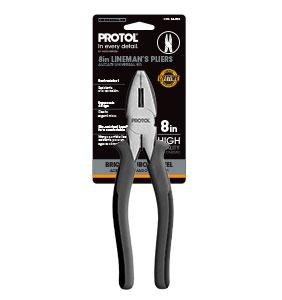One of the handiest tools in any home toolbox is pliers. Actually there are many types of pliers for a variety of jobs. The primary purpose of the tool known as pliers is to grip objects firmly. The objects can then be turned, bent, or otherwise manipulated. Pliers have parallel handles, a pivot where the handles join, and parallel jaws that grasp the object. Special-use pliers may have additional components and purposes, such as cutting pliers. Types of pliers include engineer’s pliers for gripping metal, flat-nosed pliers for grasping smaller objects, electrician’s pliers for gripping electrical wires, and round-nosed pliers for bending wire into loops. The most common are slip-joint and plumber’s pliers, both with slip-joint adjustments to change the width of the jaw grip. In addition, locking pliers, sometimes known by the Vice-Grip brand name, are popular for firmly holding objects.
To safely use pliers, first determine which type of pliers is required for the job. Then, make adjustments needed to the slip joint, if any. Locking pliers may require adjustment before use. Close the jaw around the object by pressing the handles closer together. Rotate the tool as needed to bend or turn the object. For safety, make sure that fingers and skin are not pinched by the handles, pivot, or jaw.
How to Maintain a Pliers
Quality pliers are maintenance-free and can last a decade or more if not abused. Locking and other special-purpose pliers may require additional maintenance to adjusters, springs, or the release lever.








Leave A Comment